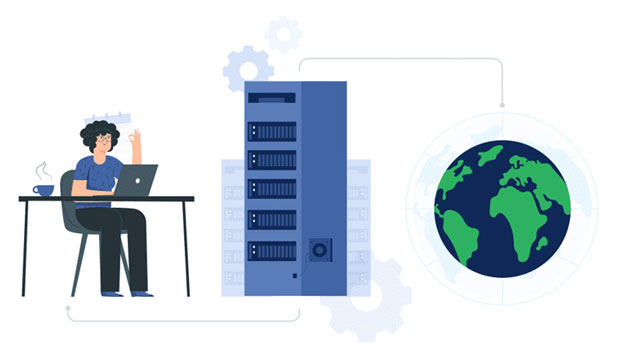What is the difference between purchasing SOCKS5 proxy service and free proxy?
When it comes to online privacy, security, and anonymity, proxies are invaluable tools. Among the many types available, socks5 proxies are particularly popular due to their versatility and robust performance. While both paid and free proxies can fulfill basic browsing needs, there are several key differences between purchasing a socks5 proxy service and using a free proxy. These differences span security, speed, reliability, and customer support. In this article, we will analyze these distinctions in-depth, highlighting the advantages and disadvantages of both options to help users make an informed decision. 1. Introduction to SOCKS5 ProxiesSOCKS5 proxies, also known as Socket Secure version 5 proxies, are a type of proxy that facilitate the routing of internet traffic through a server on behalf of a user. Unlike other proxy types, such as HTTP proxies, SOCKS5 proxies are not limited to specific types of traffic. They can handle a wider range of protocols, including HTTP, FTP, and P2P, making them more versatile. SOCKS5 proxies also offer better performance and security features, such as support for authentication and encryption.While SOCKS5 proxies are available in both paid and free versions, the experience can vary dramatically depending on which option you choose. Below, we’ll compare the main differences between paid and free socks5 proxy services.2. Security: A Critical FactorOne of the primary reasons users opt for paid SOCKS5 proxies over free ones is security. Paid proxies typically offer superior encryption and authentication mechanisms to safeguard users' data. When you purchase a SOCKS5 proxy service, you can expect secure communication between your device and the proxy server, reducing the risk of eavesdropping, data interception, or man-in-the-middle attacks.In contrast, free proxies often lack robust security features. Many free proxy services do not encrypt traffic, leaving your data vulnerable to hackers. Additionally, free proxies may log user activity, potentially compromising your privacy. Some free proxy services are even known to inject malicious scripts or ads into your browsing experience, further increasing the risk of malware infections.3. Speed and Performance: How They Affect Your Browsing ExperienceSpeed is a crucial aspect when choosing a proxy, especially if you're using it for tasks that require a stable and fast connection, such as streaming, gaming, or handling large file transfers. Paid SOCKS5 proxy services usually provide better speed and performance due to their investment in high-quality infrastructure, including fast servers and reliable connections.Free proxies, on the other hand, often suffer from slower speeds. This is because free proxy services tend to have a larger number of users sharing limited resources. When too many people are using the same server, the connection speed can significantly decrease, resulting in buffering, slow downloads, and an overall frustrating experience. In some cases, free proxies might even throttle your bandwidth, intentionally limiting your internet speed to manage congestion.4. Reliability and Uptime: Importance of ConsistencyReliability and uptime are essential when it comes to proxies, especially for users who depend on their proxy service for business, e-commerce, or even general browsing. Paid SOCKS5 proxy services often boast high uptime guarantees, with dedicated servers that ensure stable connections and minimal downtime. Many paid providers also have failover mechanisms in place, meaning if one server goes down, another one will automatically take over, ensuring uninterrupted service.Free proxies, however, are notorious for their instability. Free proxy servers can go offline unexpectedly, or the service can be down for prolonged periods due to lack of maintenance. Furthermore, free proxies might be overcrowded or outdated, leading to frequent disconnections or slow server response times. For users who rely on a consistent, high-quality experience, the reliability of free proxies simply doesn’t compare to that of paid services.5. Anonymity and Privacy ConcernsPrivacy is another significant consideration when deciding between a paid or free SOCKS5 proxy. Paid SOCKS5 services tend to offer better privacy protection, including features such as no-logs policies, meaning they do not store any information about your online activities. Additionally, most reputable paid proxy providers adhere to strict privacy regulations to safeguard user data.Free proxy services, on the other hand, may log user activity, including IP addresses, browsing history, and timestamps. This data can be sold to third parties, including advertisers or hackers, which significantly undermines the user's privacy. While free proxies may seem like a good option for casual users, the trade-off in terms of privacy can be severe.6. Customer Support and ServiceCustomer support is another area where paid SOCKS5 proxy services excel. Most paid services offer 24/7 customer support through multiple channels, including email, live chat, and phone. If you encounter any issues with your proxy, you can rely on their support team to resolve the problem quickly and efficiently.Free proxy services, however, often offer no support or minimal assistance. If you experience technical problems or need help configuring your proxy, you may be left to figure it out on your own. This lack of support can be particularly frustrating for users who are not technically savvy or need a reliable solution for complex tasks.7. Cost: The Trade-Off Between Free and Paid OptionsWhile the cost is an obvious difference between free and paid SOCKS5 proxies, it’s important to consider the value you get for the money. Free proxies may seem appealing due to their zero-cost nature, but they come with significant drawbacks in terms of security, speed, and reliability. If you’re using a proxy for sensitive tasks, like online banking or private browsing, the risks associated with free proxies outweigh the potential savings.On the other hand, paid SOCKS5 proxies require a subscription fee, but they offer a much higher level of service, including enhanced security, faster speeds, better reliability, and more robust customer support. For users who need a reliable, secure, and high-performance proxy, the investment in a paid SOCKS5 service can be well worth it.8. Use Cases: When Free Proxies Might Be SufficientAlthough paid SOCKS5 proxies have clear advantages, there are situations where free proxies might be sufficient. If you are just browsing the web casually and do not require a high level of security or speed, a free proxy might meet your needs. Free proxies are also useful for basic tasks such as accessing geo-blocked content or testing how a website behaves from different locations.However, for more serious applications, such as web scraping, accessing restricted content, or conducting secure financial transactions, paid SOCKS5 proxies are highly recommended due to their enhanced security, speed, and reliability.9. Conclusion: Which Option is Right for You?In conclusion, while free SOCKS5 proxies may seem appealing due to their zero cost, they come with significant trade-offs in terms of security, performance, privacy, and reliability. For those who require high levels of security, speed, and consistent performance, purchasing a paid SOCKS5 proxy service is the better choice. Paid services offer a more reliable, faster, and secure browsing experience, along with better customer support and privacy guarantees.Ultimately, the choice between paid and free proxies depends on your specific needs. If you are using proxies for sensitive activities or need a stable and fast connection, investing in a paid SOCKS5 proxy service is highly recommended. However, if you are only engaging in casual browsing and do not require high security or performance, free proxies may suffice for less demanding tasks.
2025-01-06

























































